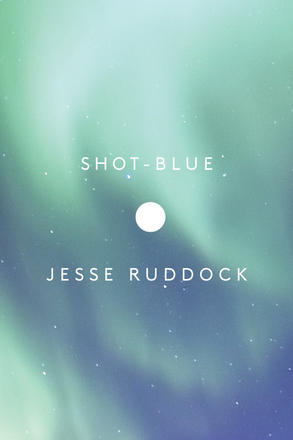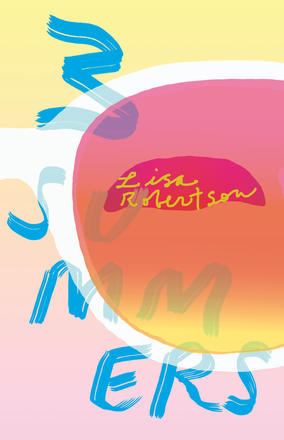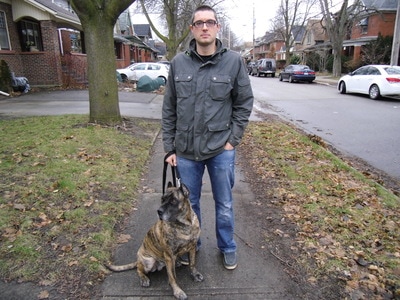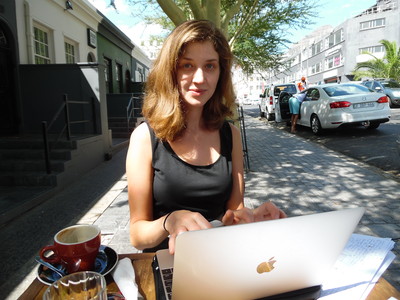 Shot-Blue Shot-Blue By Jesse Ruddock Coach House Books 2016 Jesse Ruddock’s powerful debut, Shot-Blue, is at once charged with lyrical energy and grounded in a complex, human understanding of trauma, desire and loss. Set in a northern landscape of lakes and forests filled with miners, loggers, vacationers, and the people who eke out a marginal existence at the edges of the tourism and resource extraction industries, the novel follows Tristan, the son of Rachel, a waitress and occasional prostitute, through the loss of his mother and a summer working at a resort on one of the lakes. Shot-Blue is divided into two sections. In the first, Rachel quits her job and retreats to her father’s cabin on an isolated island. Ruddock keeps a narrow focus on Rachel, Tristan, their relationship, and Rachel’s attempts to care for both of them. The section ends when Rachel, having moved closer to civilization for the winter, learns that she has never had title to her father’s island, and that it is being taken over by men who are building a resort; she wanders out into the winter, dying of exposure on the lake ice. In the second, substantially longer section, the novel opens out, including the staff and guests at the now-finished resort where Tristan lives and works. Although the cast of characters is larger, the second section shares the same concerns as the first, revisiting and expanding on the same themes, and using the same incandescent language. And it is Ruddock’s language that is perhaps the most striking feature of the novel. Ruddock has an eye for detail and a gift for metaphor. Take for example this description of the boarding house that Rachel and Tristan leave behind when they move to her father’s cabin: It was painted white a long time ago and now the paint shed in chunks like receipts. The place was famous for this: it was a miracle the siding wasn’t bare. If you lived there, flaking paint was part of your weather. It fell like snow when the wind had fingernails. On still days, it floated down like leaves and melted on the ground, forming pools of warm blue-silver. When tourists casting off the dock at the resort catch fish, they “rise to the surface throwing up wan, shredded, half-digested minnows, little pieces of flesh that [look] like [they’ve] been run through a washing machine.” Ruddock gives even mundane moments resonance and depth. This description of Tristan staring out over the lake in the late evening is rich with echoes of his relationship with his mother and that still raw loss: Tristan walked to his lookout on the far side of the island facing west, where the sunset would be most indelicate. But he was late, the sky had already bled colour like dried flowers. There wouldn’t be more sunset now, only a fading of light. He thought about watching it happen, but he felt such unrest he couldn’t stay. He looked across the mulled water and thought about climbing down and getting into it and going all the way out. But he would never do it. He didn’t want the deep water and didn’t care if it wanted him. He didn’t even want to remember what it felt like. It was her lair now. Ruddock’s adroit and revealing diction, such as the use of “indelicate” and “mulled” here, complements her eye for detail and her use of metaphor. Ruddock’s language is consistently, often unexpectedly, beautiful, but this is not a pretty book. Shot-Blue is set in an environment permeated and defined by violence, its menace, allure and traumatic consequences. Rachel has a facial scar: “It nicked her left temple then ran down her jaw, tent-covering a depression where a full, round cheek should have been.” Its origins are never explained, but it marks her out as a victim, and suggests a past that has left her as emotionally wounded as she is physically scared. The burning of Rachel’s father’s cabin by the men building the resort is a kind of violence, and is perceived as such by Tristan who vows to burn the whole island in revenge. In the second section of the novel, the boys who work at the resort play a game in which they take turns punching each other. Tristan himself invites violence, letting the other boys punch him without attempting to defend himself. Tristan’s desire to be beaten, to be disfigured, is also the desire to connect with his dead mother by becoming, like her, the object of violence, by inviting it to mark, transform and erase him. The novel mixes love and mourning together with self-annihilation in a complex amalgam that testifies to the centrality of violence to the lives of its characters. As part of this violence, bound up with it and happening alongside it, is the transformation of people, particularly women, into objects to be exploited. Rachel remembers prostituting herself as a teenager: Rachel would sell herself to a friend. She didn’t think of it as selling sex. They were not good friends, but he would pay her, and they went like that, having sex in his bedroom, even when his parents were home, for about a year until he got a girlfriend. Another time, it was one of her brother Sheridan’s friends, who’d heard about what she’d done. He asked her, said he liked her, he wouldn’t tell Sheridan, and he would pay. At fifteen, she had no other way to get money. She knew those boys, and she wasn’t afraid of herself. Friendship and sexual exploitation overlap, suggesting that even close relationships are defined by a casual brutality. This pattern is repeated when Rachel realizes she needs money to buy the few extra supplies she and her son need to survive on the island. She starts an affair with Keb, a man who ferries tourist around the lakes in his boat. Like her friendships, the affair has emotional content, but is defined by Keb paying her for sex. In the second section, Stella and Emiel, two guests at the resort, toy with Tomasin, a young girl working there for the summer. Their games are more refined than Rachel’s exploitation, but they still, at their core, involve the reduction of the girl to an object, to a plaything that can be manipulated, possessed and then discarded at the end of the summer. This pattern is not limited to female characters. When Rachel dies, Keb feels responsible for Tristan, and finds him work and a place to stay at the resort. This is at once an act of kindness—Keb has no duty to protect Tristan: he is not the boy’s father and he was only the mother’s john—and an example of this pattern of exploitation: Keb keeps all of Tristan’s pay, cutting his kindness with selfishness, effectively saving the boy by selling him into servitude. Although this pattern is not limited to female characters, it is primarily limited to them, and Tristan is a special case. He is the only male character to love, first, his mother, and, then, when she arrives at the resort, Tomasin, without participating in their exploitation, as human beings rather than objects. Through Tristan, Ruddock registers the collateral effects of trauma, exploring how it spreads out from its focal point along lines of emotional connection, wounding those attached to it along these lines as surely as those who experience it directly. From one perspective, Tristan, with his defensive interiority and his desire for self-annihilation, is the effect of damage done first to his mother and then to Tomasin. This understanding of trauma, its impact, legacy and capacity to transform even those it does not immediately touch, speaks to the novel’s penetrating emotional sensibility. On the back cover, Rivka Galchen praises it as “a genuinely wise novel,” and she is exactly right. This is not to say that the novel does not have its flaws. Although Ruddock’s supercharged writing makes for some of the Shot-Blue’s best moments, it is not always a strength. In the second section, the novel widens its scope, introducing a handful of new characters. Of these, only Emiel, one of the resort’s guests, is given a detailed background, and these characters’ relationships to each other and to the concerns of the novel take some time to develop. When not sufficiently grounded in character and plot, Ruddock’s metaphor-driven and imagery-laden language can sometimes fall flat. And the novel drags somewhat through this middle portion. But the second section does slowly begin to echo and expand on the themes of the first section, and it picks up momentum as it moves towards a closing handful of pages that gather together the threads of the narrative into a spectacularly written and wrenching finale that is well worth the reader’s patience. I began this review by saying that this novel is about trauma, desire and loss. This might suggest that Shot-Blue is a poetic meditation, that it is, like too many novels that are poetic and meditative, easy, even anodyne, but this is book is not that at all. Its beautiful language is bound up with violence. Its poetry is gritty. Its truths are difficult, uneasy. And, although it is not flawless, it will reward you with some genuinely great closing pages. AARON SCHNEIDER is a Senior Literary Editor at The Rusty Toque. His stories have appeared in the danforth review, Filling Station, and The Puritan.
 3 Summers 3 Summers By Lisa Robertson Coach House Books, 2016 Contrasting her previous titles, such as Debbie: An Epic or Cinema of the Present, with the newly released 3 Summers, Lisa Robertson—in conversation with Charles Bernstein—suggests that her latest title veers away from the “book as a unit of composition.” Rather than pursuing a particular query for the duration of the book, Robertson implies that 3 Summers is more of a poetic “grab bag.” As a collection of 11 long poems that are each independently gorgeous—and commissioned for diverse, but often fine arts contexts—the idea that these are single poems operating as freestanding agents rings true. At the same time, however, key words, thought processes, creative involvements and concerns repeat, pulse, loop back and insert themselves persistently into the texts, and the collection is further unified by the emotive artwork by Hadley+Maxwell that appears throughout. For me, 3 Summers as a book-length work comes together to articulate a cohesive, poetic feminism: “the total refusal of each existing narrative of femininity” (“The Middle”); it incorporates fleeting rewritings of myths, reappropriations of derogatory terms, and fluid, nonlinear glimpses of form. (It should also be noted that the lines I quote and build my analysis on are culled from a cross section of the book; typically, the lines derive from a reading of 3 Summers as a whole and an enjoyment in linking the common concerns that draw together the distinct poems.) * A major concern throughout 3 Summers is the reversal of the traditional dialectic division between intellect and sensuality. Robertson topples the philosophical entitlement of mental exertion and the scientific prerogative of linearity on its head. She embodies thought and infuses creativity with the rigor of cognition, reversing the established dichotomies, embracing the possibility of a collaboration, an oscillation, between intellect and the senses instead. This book opens with the poetic speaker “lying in the heat wondering about geometry / as the deafening, uninterrupted volume of desire / bellows, roars” (“The Seam”). Immediately, there is not so much a juxtaposition as an inclusion of a highly abstract form of mathematics and the pulse of arousal. “Now it’s time to return to the sex of my thinking” (“The Seam”), Robertson writes, projecting the coexistence of intellectual stimulation with physical pleasure: “I made my muscles into thoughts.” (from “A Coat”) An offshoot of this valorization, or intellectualizing, of sensuality is an ongoing project throughout 3 Summers, which takes the form of an ideology of hormones. Traditionally, hormones go hand in hand with an excess of emotion, the irrational counterpart to logic. The hormonal is often a depreciatory code word to diminish female experience in a vague, offhand way—oh, she has her period, oh, she’s pregnant, oh, she’s menopausal. Robertson channels the uncontainability of hormones or the nondefinitive, fluid context of hormones away from their negative connotations, embracing its ubiquity and allowing it to suffuse her text. The omnipresence of hormones throughout 3 Summers is a fine counterexample to the supposed “grab bag” structure of the book; hormones periodically slip into the poems as a thematic thread running through them. The reader would be hard pressed to escape from hormones as they reside in and progress through the poems, and the promise lingers that “Everything will be a hormone” (“The Seam”): “What I witnessed was But hormones are more intentional than a verbal tic or recurrent allusion. For Robertson, they exceed the boundaries of the letters that spell out the word to become the vessel for poetic expression itself as she celebrates: “The poem is a hormone” (“The Seam”). The reinscription of stereotypically feminine volatility as a form of creative omnipresence is one of the strongest feminist statements I’ve come across in poetry. If hormones serve as a container for poetry, then, at a structural level, poetry points away from rigidity and linearity and towards fluidity, openness, and formlessness as form. “You could say that form is learning,” a process of acquisition (“On Form”). Form is not content, but rather that which forces the content to adjust, that which makes it uncomfortable. If hormones are a factor of disturbance biologically speaking, then in poetry, they can motivate agency and transformation: “is form / a dog as a horse as a deer as a / fish and a bramble a grater rapacious / the second cervical vertebra” (“On Form”). Form is continual transmogrification. Attending a recent public conversation and reading with Johanna Skibsrud hosted by Concordia University’s Writers Read Series, I made a note to myself on my phone, wanting to remember the phrase, “truth procedure, not truth claim.” Although I attributed the words to Alain Badiou, I can’t remember, unfortunately, whether they are a direct quote or Skibsrud’s interpretation of his work. Either way, these words resonate, for me, with Robertson’s writing, for in the process of reversing the hierarchy of intellect and sensuality, she never positions her new mode of thinking as an absolute. While there is a reverent inclusion, or reinvigoration, of hormones, Robertson never crowns hormones as a new ultimate: “there is actually no binary – just the juiciness and joy of form otherwise known as hormones” (“Third Summer”). The instant that one imagines understanding, this semblance of truth melts and a new truth, an ongoing, fluid truth procedure, emerges. * Thematically distinct, but theoretically adjacent to the role of hormones in this book is the preponderance of trees throughout. The Ovidian myth recounts Apollo aggressively pursuing Daphne, a water nymph. As the chase got heated and he was about to overtake her, rape her, she invoked the gods, an act that both saved her and transformed her into a tree. Although this myth is never directly alluded to in 3 Summers, it lingers at the peripheries of my reading experience. Trees, a woman’s relationship to or interaction with trees, the woman as tree, “the / philosophy of the tree” (“Toxins”) combine as another dominant thread that winds through and weaves the poems together:
Trees, in their lush, green vitality, in their gnarled materialization of wisdom, adopt significance, in these poems, as the locus of regeneration and strength. Arboreal aspiration becomes a catalyst for creative expression. Given that in the instant that Daphne shouts out to the gods and voices herself she becomes a tree, it can be argued that utterance as self-activation inspires metamorphosis—metamorphosis into an organism, a tree, that, by definition, never stops growing. Robertson unfurls her speaker. Through a process of verbal photosynthesis, she breathes, speaks and, expressing herself, grows, so that soon her “skin is treebark” (“On Form”) and her words emanate from a sylvan physique: “I had thought In an organic turn of phrase, the poetic speaker has transformed both into a tree—a highly regarded, almost mystical transfiguration—and a dog. In complete contradiction to all cultural programming that condemns calling a woman a dog, a bitch, as one of the lowest possible insults, the dog’s bark resounding gruffly in Robertson’s poem is amplified and enriched to the vibrancy of poetic expression. Barking, here, is the verbalization of tree bark as skin; it is the transformation, the process; it is a primordial mode of expression that doesn’t exit through the throat, but emanates from the entirety of the body’s surface. In this context—reclaiming the figure of the female dog and aligning it with the potency of the tree—it makes complete sense that Robertson strategically positions “the total refusal of each existing narrative of femininity” as “explained to the dog” (“The Middle”). * Robertson autographed my copy of 3 Summers with the words “a tiny draft of coolness” (“The Middle”). Comparing notes after the fact, three or four friends noted that they had received the same inscription. Now that I’ve discovered this line on page 57, I can’t stop wondering whether repeatedly choosing that particular phrase to sign her book was a deliberate authorial nudge, whether the poem on that page includes some kind of specially synthesized message about the book as a whole. Even as I mock my own attempt at manipulating poetry into an exegetic conspiracy theory, I circle the words “in hormonal forest” centred on that same page. Whether Robertson intentionally led me to these words or not (probably not), the obvious confluence of these two concepts—hormones and trees—strengthens my analysis of the collection, at the very least, for myself. * 3 Summers is an incredibly rich text and, of course, I am unable to cover all the material that I had intended to. In particular, I regret not developing on the notion of the feminist goddess; the thematization of the reading process; the triangulation of the collection with the title’s temporality—three summers’ seasonal stasis, recurrence and unrest. Finally, in the spirit of full disclosure and my decidedly subjective stance, Lisa Robertson’s is the book that has moved me most in recent years. Its poetic extremities heighten and sharpen a gentle torsion of nerve endings. It is philosophical, not in the sense of predicating itself on existing theories, but in its honest, necessary articulation and assertion of new, radically contemporary thought. KLARA DU PLESSIS is a poet and critic residing in Montreal. Her chapbook, Wax Lyrical—shortlisted for the bpNichol Chapbook Award—was released from Anstruther Press, 2015, and a full-length collection is forthcoming from Palimpsest Press. Poems have recently appeared in Asymptote, Canthius, CV2, PRISM, Minola Review, among others. She curates the monthly, Montreal-based Resonance Reading Series, and writes reviews and essays for Broken Pencil Magazine, The Montreal Review of Books and The Rusty Toque.
|
Rusty ReviewsMonthly reviews of poetry and fiction. Archives
January 2017
Categories
All
|



 RSS Feed
RSS Feed
